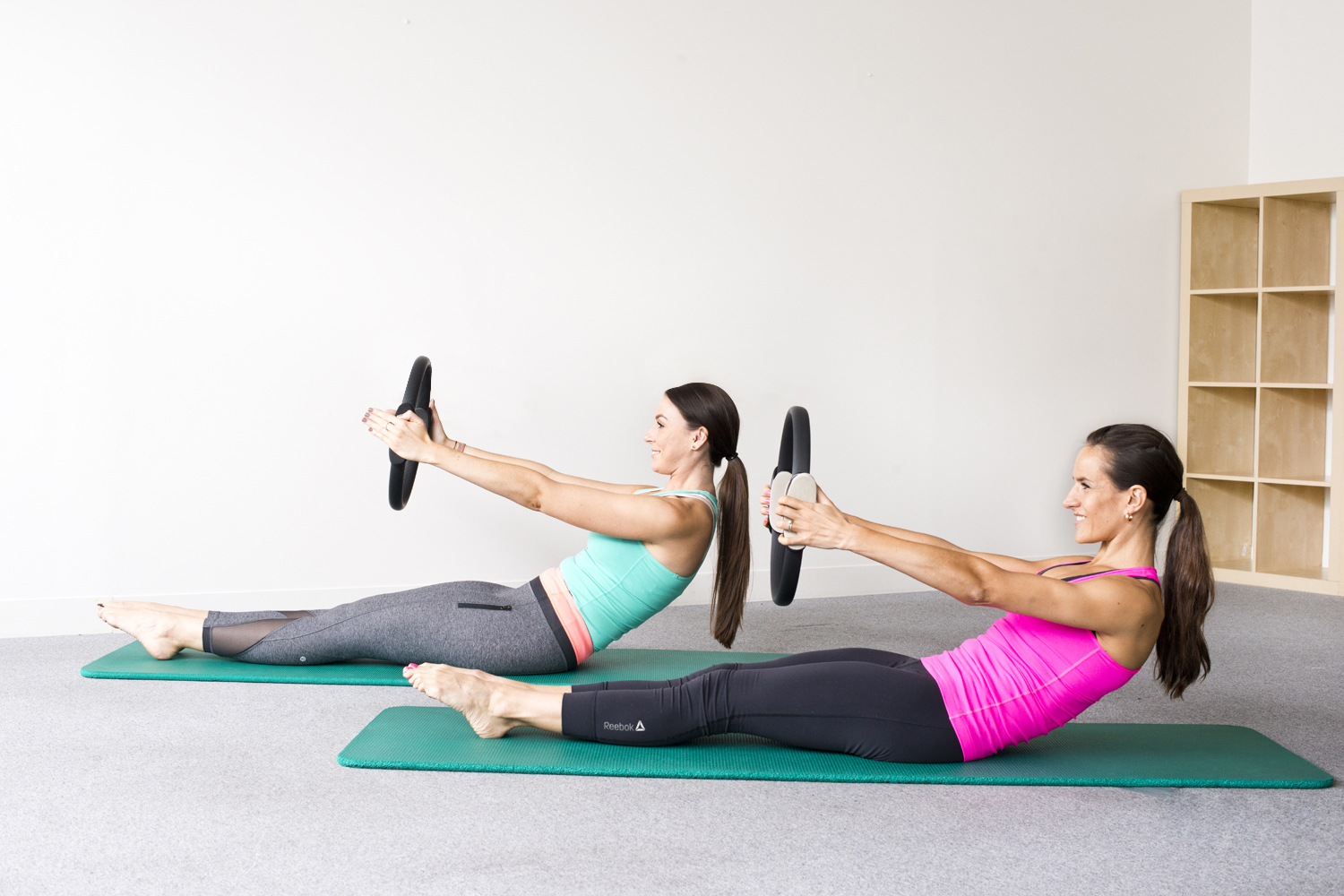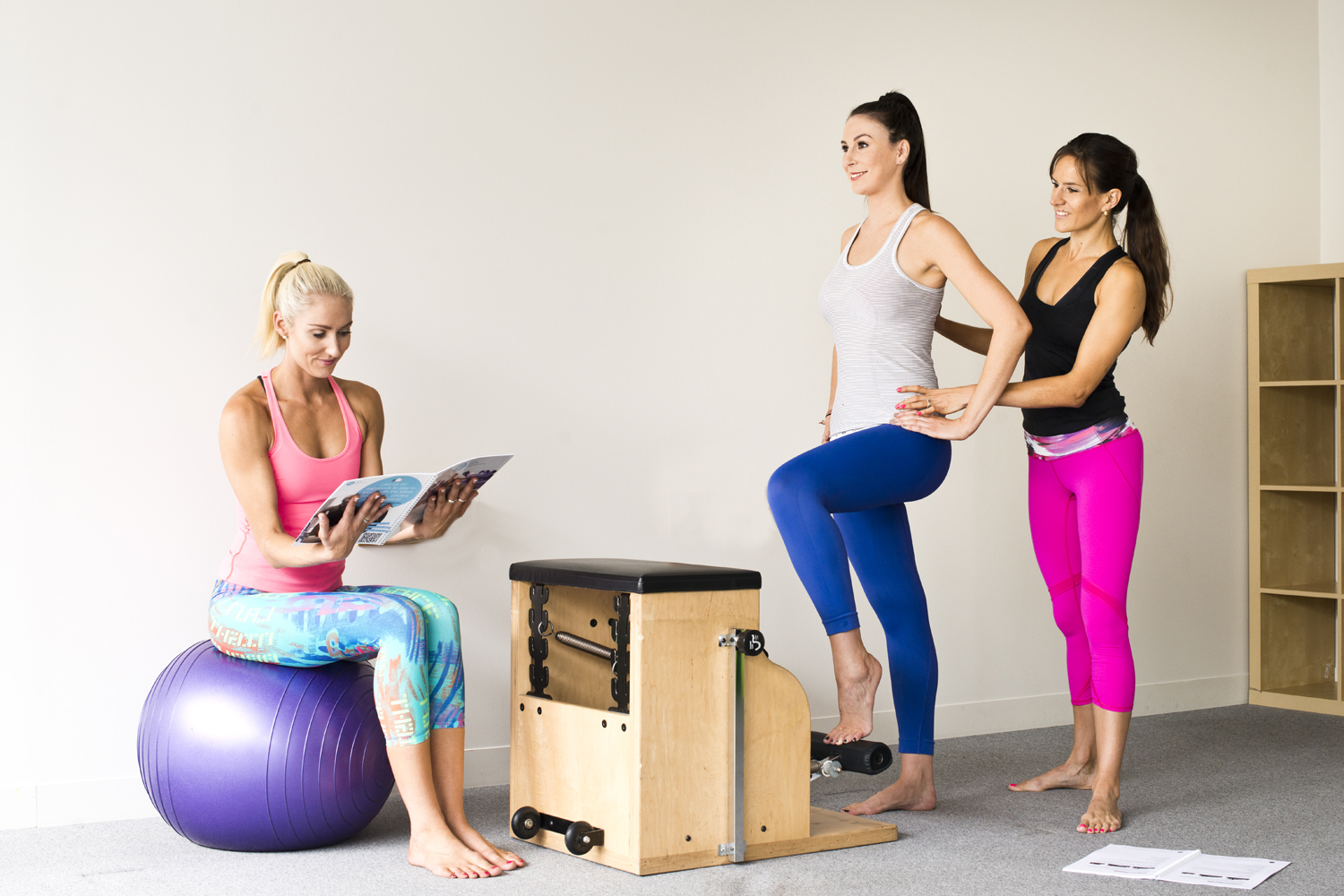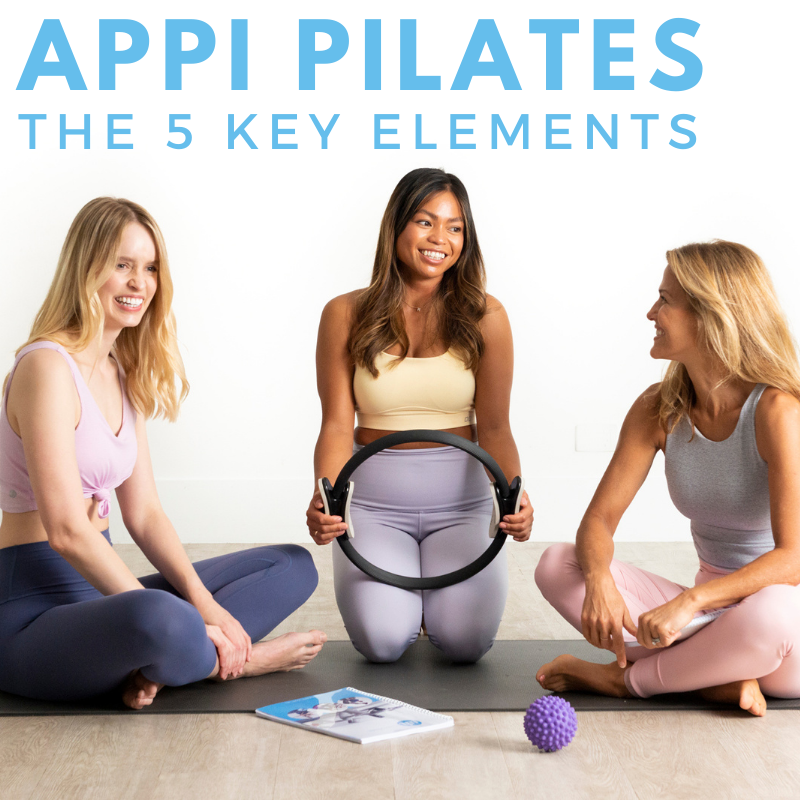APPI Pilates– The 5 Key Elements and how they will help you - both on and off the Pilates mat!
APPI Pilates is the most incredible balance of strength, core awareness, coordination, and control. This is why it is our favourite form of exercise – it sets such a good foundation for almost any other activity, including of course day to day life!

Whether you are completely new to Pilates or a seasoned pro, it doesn’t hurt to recap on some of the foundation elements of movement, that are specific to the APPI Pilates method, to help you on your quest to move and teach better.
- Breathing:
It goes without saying that breathing is very important! Oxygen is required in order to keep us alive, and correct breathing can help to reduce unnecessary pressure around the trunk, as well as reduce muscular tension. With Pilates, the goal is to support the natural movement of the ribcage when we are breathing. Breathing should not be strained, and it should be applied to support a movement, rather than reduce it. The breathing pattern may vary for different exercises, depending on the load and goal.
- Centering:
‘Centering’ means activation of our deepest stomach muscles, (as well as our deepest lower back muscles, and the pelvic floor too!), in order to support the body. Our core abdominal muscles are not just the outer six-pack muscle that everyone sees – there are actually deeper muscles that serve to offer support to our trunk. Having an awareness that these deeper muscles exist, and are important is such an important element of Pilates to make sure there is no undue strain or pressure on the body when it is loaded through exercise. A cue that can be helpful to assist in centering is to imagine you are wearing a low slung belt just below the belly button, and as you exhale, imagine that belt is tightened just half a notch. There are so many different centering cues, and remember different cues work for different people!
- Rib cage placement:
Where our ribcage is positioned is something that is so easily overlooked but really matters if we want to achieve the best possible overall alignment throughout our Pilates practise. When lying on our back, the rib cage should ideally be resting naturally on the mat. Getting the rib cage placement correct is so important in terms of setting a sturdy foundation from which the core can work, and arms can also move from. A cue that is commonly helpful for people when lying on the mat, in terms of having an awareness of rib cage placement, is to imagine the ribcage and lower ribs ‘sinking into the floor’.
- Shoulder blade placement:
Think of the shoulder blades as the base from which the arms move. It is so important that the shoulder blades are well stabilized against the rib cage, to avoid pain around the neck and shoulders. Awareness and stability around the shoulder blades does not come easily! It involves a finely tuned balance of the muscles around the shoulder, middle back, and neck. An example of creating a basic awareness of shoulder blade positioning, when sitting upright, or standing, is to keep the collar bones broad and imagine each shoulder blade reaching back and down as if to reach into the opposite back pocket of a pair of jeans – this concept can help to create that full shoulder blade contact with the rib cage for the most stable base.
- Head and neck placement:
When we think of a ‘neutral’ head and neck position, it is one that supports the natural curve of the neck, as well as the rest of the spine. Falling out of this neutral balanced position that supports the natural curves of the spine can result in neck discomfort so being aware of our alignment is so important. Some cues that can help neck and head alignment awareness include ‘reach the crown of your head away from your tailbone’, or ‘imagine a string at the crown of your head lifting you up’.

Having an awareness of these 5 APPI Key Pilates Principles can help to take your practice to the next level, in terms of getting the most out of each exercise, and also potentially avoiding injury. I hope you are feeling a bit better versed with the APPI 5 key elements, and we look forward to seeing you on a course soon!
APPI Pilates Instructor Course
Are you interested in becoming an Internationally recognised APPI Pilates Instructor? Your dream can become a reality when you enrol to study at Unite Health - Australia's leading Pilates teacher training provider. We can help set you on the path to positively change your life and fast-track your career as certified Pilates instructor. Download your Pilates Career Ebook to find out if a career in Pilates is for you.
